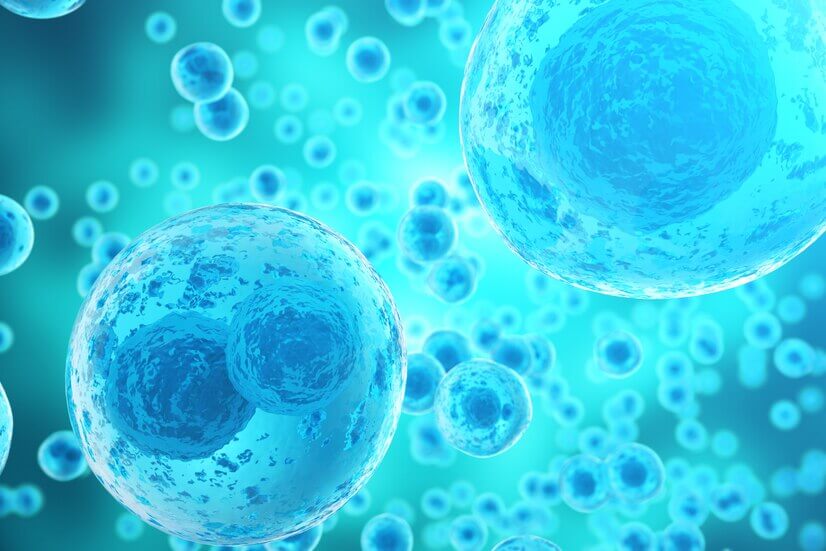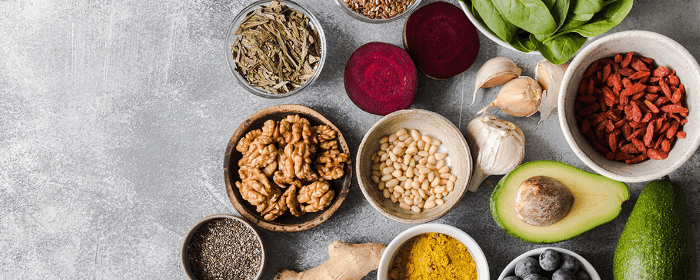
by Stemedix | Dec 26, 2022 | Regenerative Medicine, Health Awareness, Uncategorized
There are endless types of medicinal treatments available to treat your health concerns, but one of the more innovative approaches in regenerative medicine. It focuses on using your body’s own materials to stimulate a healing response in your cells, tissues, muscles, and more.
Types of Regenerative Medicine
There are several types of regenerative medicine, but the two most popular treatments are stem cell therapy and PRP injections.
Stem Cell Therapy
Stem cell therapy is a regenerative medicine treatment that uses natural stem cells to produce an intense healing response within the body. When your body’s own stem cells are injected into certain problem areas, they begin to repair damaged cells, nerves, and other tissues. They can also stimulate the growth of new cells and tissues.
PRP Injections
PRP injections are another type of regenerative medicine treatment. PRP refers to “platelet-rich plasma,” which is the portion of your blood that is high in platelets. During PRP therapy, platelet-rich plasma is harvested from your own blood and injected back into specific areas of the body. This can elicit a healing response and new cell growth.
Uses for Regenerative Medicine
Regenerative medicine can be used to treat a variety of concerns, both aesthetic and medical. The following are some of the most common uses for regenerative medicine treatments:
Alzheimer’s Disease
Alzheimer’s is a progressive neurological disease that impacts memory and cognitive skills. It typically occurs in the late 60s and older but can begin at younger ages. Stem cell therapy may be able to treat the symptoms of Alzheimer’s and slow the progression of the disease by directly targeting nerve pathways and repairing damaged brain tissue.
Autoimmune Diseases
Autoimmune diseases like lupus and rheumatoid arthritis can cause chronic pain and impact the way your immune system functions. Regenerative medicine therapy may be a treatment option for certain autoimmune issues, helping stimulate new cell growth and strengthen the immune system.
Signs of Aging
Wrinkles, fine lines, and facial creasing are some of the most common signs of aging. Regenerative medicine, like PRP therapy, can resolve these age-related changes by stimulating new skin cell growth.
Seeking Regenerative Medicine Treatment
You may be a candidate for regenerative medicine treatment if you struggle with anything from chronic pain to hair loss. Many of these treatments are still being researched, and methods are constantly being improved. Speak to your physician about potential regenerative medicine therapy for your concerns.
Contact Us
If you’re interested in learning more about innovative and advanced medical technologies like regenerative medicine treatment, contact Stemedix today to learn more about the treatment options we have to offer!

by admin | Nov 16, 2022 | Health Awareness
Breathwork is a form of mindfulness that offers several physical, mental, and spiritual benefits. Often, people develop the unconscious habit of shallow breathing, which can trigger stress in the body and simulate a fight-or-flight response.
Breathwork exercises use deep, diaphragmic breathing to increase oxygen and stimulate the parasympathetic nervous system, reducing stress and calming the body and mind. Beginners can include breathwork in their daily lives in seven simple ways.
1. Diaphragm Breathing
Diaphragm breathing is a primary breathwork practice. Start by sitting or lying down. Rest one hand on your chest and the other on your belly. Slowly inhale using your nose and feel your belly rise. Next, let the breath out through your mouth and feel the belly soften.
2. Box Breathing
Box breathing follows a pattern of 4-4-4-4. Inhale, hold your breath, exhale, and pause, each on the count of four.
3. Alternate Nostril Controlled Breathing
This exercise focuses on breathing through one nostril at a time. Sitting upright, block your left nostril with your left thumb. Slowly breathe in through the right nostril, then release your hold on your left nostril and use your third finger to block your right nostril.
Pause at the top of your inhalation before exhaling through your left nostril. Pause again, then inhale through your left nostril, and switch your fingers again, this time closing your left nostril with your thumb.
4. Ocean-Sounding Breath
Also known as the Ujjayi breath, the ocean-sounding breath is a popular yoga technique to create an audible breath. Start by inhaling through the nose. As you slowly exhale, contract your throat to make a gentle ocean sound.
5. Four-Seven-Eight Breathing
A form of rhythmic breathing known as four-seven-eight breathing can relax the body, improve sleep, and offer mental and physical health benefits.
Sitting or lying down comfortably, inhale for four seconds. Hold the inhale for seven seconds before exhaling for eight seconds.
6. Pursed Lip Breathing
Pursed lip breathing slows the breath and corrects breathing patterns. Start by sitting comfortably, relaxing your neck and shoulders. Next, breathe in with your nose as you count to two, then purse your lips as you exhale through your mouth as you count to four.
7. Resonance Breathing
Resonance breathing intends to relax your body and mind while reducing anxiety.
Start lying down with your eyes closed. Gently breathe in through your nose with your mouth shut for six seconds. Don’t overfill your lungs. Exhale slowly over six seconds, gently allowing your breath to leave your body.
Whichever method you choose, incorporating breathwork into your daily routine can make a difference in your health.
For more health awareness blogs, please visit www.stemedix.com/blog.

by admin | Nov 9, 2022 | Health Awareness
Inflammation is your body’s response to injuries, damage, and certain health conditions. If something is wrong with a certain part of your body, you will likely experience some inflammation.
Usually, inflammation is a positive sign that you are healing and recovering. However, excessive inflammation can cause long-term health problems. Starting an anti-inflammatory diet is key to fighting off problematic health conditions.
Why Inflammation Matters
Without inflammation, your body would not be able to repair itself when it needs to. But with too much inflammation, you are at risk for chronic health problems. Your tissues and cells can become damaged from too much inflammation over time.
Your diet can add to or alleviate the inflammation you experience in your body. If you suffer from an inflammatory disorder, it is even more important to follow an anti-inflammatory diet to control your symptoms.
Some common inflammatory disorders include irritable bowel syndrome (IBS), autoimmune diseases, and chronic fatigue syndrome (CFS). If you have been diagnosed with one of these conditions, consider an anti-inflammatory diet to feel better and improve your overall well-being.
Foods That Fight Inflammation
Certain foods have chemical compounds that naturally modulate your body’s inflammatory responses. To fight against excessive inflammation, try adding some anti-inflammatory foods to your weekly menu. Incorporating even a few of these foods could make a difference in your overall health.
Try adding these foods and spices to your diet:
- Turmeric
- Peppers
- Fish
- Olive oil
- Dark chocolate
- Nuts
- Leafy greens (spinach, kale, etc.)
- Eggs
- Chicken
- Turkey
Anti-inflammatory foods will help you maintain your health and prevent inflammation from damaging your healthy cells and tissues. With less inflammation in your body, you will likely feel a lot better.
Foods to Avoid
There are plenty of delicious, healthy foods that combat inflammation. Unfortunately, there are a few ingredients to avoid as well. Inflammatory ingredients and foods can give you more problems and worsen your symptoms.
Avoid the following ingredients to control inflammation:
- Refined sugars
- Artificial sweeteners
- Simple carbohydrates
- Processed meats
- Sodas
- Sweets, pastries, and breads
- Fried food
- Highly processed cheeses
These foods can be harmful to your health. Avoid them, when possible, to prevent and treat inflammation.
Discover comprehensive testing to see where you are insufficient and deficient to optimize your health. For more health awareness blogs, please visit www.stemedix.com/blog.

by admin | Nov 2, 2022 | COPD, Health Awareness
The symptoms of chronic obstructive pulmonary disease (COPD) often worsen over time. As a result, patients with the condition will experience increased wheezing, mucus production, shortness of breath, and discomfort.
Regularly practicing breathing exercises can help slow disease progression and manage symptoms. In addition, breathing exercises can reduce tangential symptoms, such as anxiety from shortness of breath.
Diaphragmatic Breathing
The diaphragm is the most significant muscle of respiration. As with any other muscle in the body, exercise strengthens the diaphragm and helps it work more efficiently.
Diaphragmatic breathing exercises help you use your diaphragm correctly so breathing requires less energy and effort.
To practice diaphragmatic breathing:
- Lie on your back
- Place one hand on your chest and one on your diaphragm, below the ribcage
- Breathe in slowly through your nose, feeling the diaphragm expand
- Tighten your stomach muscles as you exhale
When practicing diaphragmatic breathing, the hand on your chest should remain mostly still. In contrast, the hand on your diaphragm should move up and down with your inhale and exhale.
Pursed Lip Breathing
Pursed lip breathing works to control shortness of breath, slowing the pace of breathing and releasing trapped air from the lungs.
Once you master pursed lip breathing, it can effectively calm your breath during activity.
To practice pursed lip breathing:
- Relax the shoulder and neck muscles
- Inhale through your nose, keeping your mouth closed
- Pucker your lips as if to whistle
- Gently exhale through your pursed lips
In pursed lip breathing, exhalation is more critical than inhalation. While the technique does not require taking a deep breath, your exhale should take twice as long as your inhale.
Huff Cough
The body coughs to remove excess mucus from the lungs naturally. The huff cough allows you to cough effectively without overly straining your muscles.
To practice the huff cough:
- Sit comfortably in a chair
- Inhale a little more deeply than usual
- Using your stomach muscles, blow the air out in three breaths
- While releasing the breaths, make a “ha, ha, ha” sound
While huff coughs lack the force of a regular cough, they are often more effective at removing excess mucus.
Improve Your COPD Through Breathing Exercises
Practicing these exercises daily can strengthen your diaphragm, improve shortness of breath, and release excess mucus without straining. Breathing exercises have been shown to improve the quality of life for COPD patients.
For more health awareness blogs, please visit www.stemedix.com/blog.

by admin | Oct 29, 2022 | Health Awareness
Have you been struggling with symptoms like nausea, bloating, or constipation? These are common indicators of gastrointestinal (GI) issues.
While you may think that gastrointestinal issues only impact your digestive system, they can have consequences on your overall well-being if left untreated. GI issues can lead to everything from weight loss to fatigue to brain fog.
Diagnosing the Condition
Treating your GI issues relies on getting a proper diagnosis. When it comes to gastrointestinal issues, one of the simplest diagnostic tools is a stool test. Stool tests use a small portion of the patient’s stool to look for certain indicators of disease. Things like blood, bacteria, and mucus can all be signs of gastrointestinal distress.
One stool test is called the GI Effects by Genova Diagnostics. GI Effects uses innovative technology to analyze the contents of a patient’s stool. This can provide valuable information about the patient’s gastrointestinal system and how well it is functioning.
The GI Effects Comprehensive Panel includes tests that evaluate your intestinal microbiome, inflammation levels, and digestive function. The test’s panel uses a proprietary scoring system to prioritize findings and track the severity of certain issues. Your stool’s biomarkers are grouped and scored in these five areas of GI function:
- Maldigestion
- Inflammation
- Dysbiosis
- Metabolite Imbalance
- Infection
Assessing your intestinal health in these five key areas will allow your medical providers to develop a customized treatment plan that addresses your GI issues.
Treatment Plans
When a patient presents with common GI symptoms like gas, diarrhea, constipation, bloating, or nausea, the GI Effects stool panel can be used to quickly diagnose a variety of digestive issues. This includes conditions like irritable bowel disease and diverticulitis.
The GI Effects system is an essential tool in the diagnosis and treatment of some of the most common gastrointestinal conditions. Contact us if you would like to discover your insufficiencies and deficiencies through a GI Effects test today.

by admin | Oct 19, 2022 | Health Awareness
The terms “sell by,” “best by,” and “use by” are notoriously confusing. While many shoppers err on the side of caution, increasing grocery costs mean that understanding these dates can lead to savings.
What Your Food Labels Mean
Since there’s no federal standard for food labels, laws around product dates vary by state. Here’s what you can interpret from your food labels.
Best If Used By and Best If Used Before
The terms “best if used by” and “best if used before” do not refer to your food’s expiration date. Instead, these phrases refer to flavor and quality. Once the date after your “best by” label passes, the taste of the food may become compromised.
The “best by” labels can apply to any food category, including canned, boxed, frozen, or refrigerated.
Use By
“Use by” is a little clearer. The “use by” date refers to the last date when the food is at its highest quality. “Use by” generally only applies to perishable items, such as dairy and meat products or prepared foods.
Sell By
“Sell by” dates are more about inventory control than expiration. You can consume foods after the “sell by” date, but they should no longer carry them in stores. Typically, dairy products are suitable for a week after their “sell by” date, and eggs are safe to consume for three to five weeks after their “sell by” date.
Expiration Date
Food may be assigned an expiration date due to loss of function after that date – like yeast that won’t rise – or changes in the safety or texture of the food.
Foods assigned an expiration date include:
- Baby formula
- Baby food
- Vitamins
- Over-the-counter medications
- Cake mixes
- Baking powders
While dates are helpful to track how long you’ve kept a food, unless the dates clearly state that the food expires, the best way to determine whether a food is spoiled is by examining it for changes in smell, color, texture, or consistency.
Additionally, the best way to keep your meats, soups, and casseroles longer is to freeze them. Bacteria can’t grow at frozen temperatures, so frozen meals maintain their safety for years.
For more health awareness blogs, please visit www.stemedix.com/blog.







 St. Petersburg, Florida
St. Petersburg, Florida
